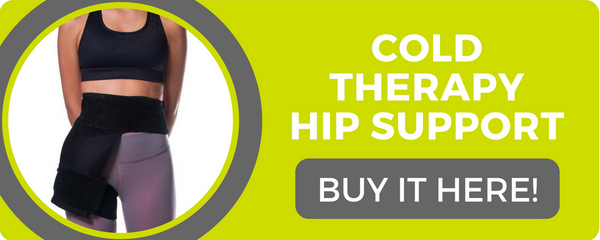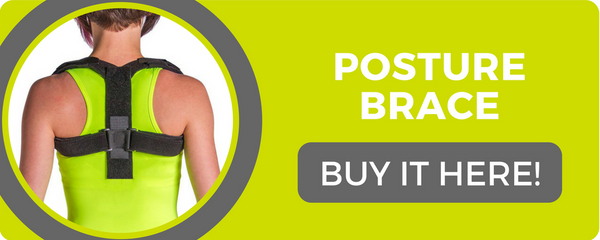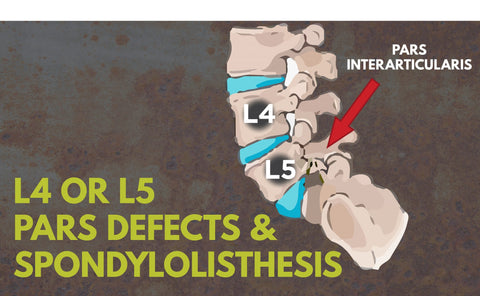Pregnancy Back Pain
Is it normal to have back pain during pregnancy? Yes, absolutely. In fact, those lucky few who do not experience back pain at some point during their pregnancy are actually in the minority.
The American Pregnancy Association (APA) estimates that between 50% and 70% of women experience back pain in pregnancy.
Lower back pain may even be an early sign of pregnancy. It’s very possible that you may just be just five or six weeks pregnant and wondering what’s causing your lower-back pain.
When Does Pregnancy Back Pain Set In?
Pregnancy back pain may show up early—as soon as the first trimester. At this point, your figure is unlikely to have changed all that much.
But major hormonal changes that make your soft tissues laxer are well underway. Thus, hormone changes are often to blame if you are just 4, 5, or 6 weeks pregnant and dealing with lower back pain.
While lower back pain in early pregnancy can and certainly does occur, that is not the most common time for discomfort to set in. Back pain is most common (and most severe) during the third trimester when your baby is the largest.
The most common time for back pain to rear its ugly head is around the 18-week mark—roughly the midpoint of your pregnancy. This discomfort typically lingers or intensifies through the remaining 22 weeks.
This does not, however, mean you should simply strap in for five months of misery. There are things you can do to limit or even cure this pregnancy “symptom,” many of which can be done from the comfort of your home. More on that shortly…
Common Causes of Back Pain During Pregnancy
Generally speaking, APA says the following are to blame for back pain while pregnant:
- An increase in hormones makes your ligaments more flexible, reducing the stability of the pelvis and back. Over-mobility of these areas is often to blame for lower back pain during early pregnancy.
- Increasing your body weight by 25% to 30% in a short amount of time is a lot for the body to handle. This can lead to sore muscles, ligaments, etc.
- The added weight also shifts your center of gravity forward, stressing the tissues of the back.
- Many also change their posture to support the belly, leading to strain and pain in the upper and/or lower back. The pregnant lady waddle adds insult to injury. Get some quick tips for good posture.
- For some, simply being pregnant is stressful, plus those midnight trips to the bathroom interrupt sleep. This also takes a toll on the body.
A preexisting history of back pain associated with structural issues like scoliosis or injury can make a woman more prone to back pain when she is pregnant, as can carrying multiples.
Thankfully, back pain goes away quickly post-pregnancy for most women.
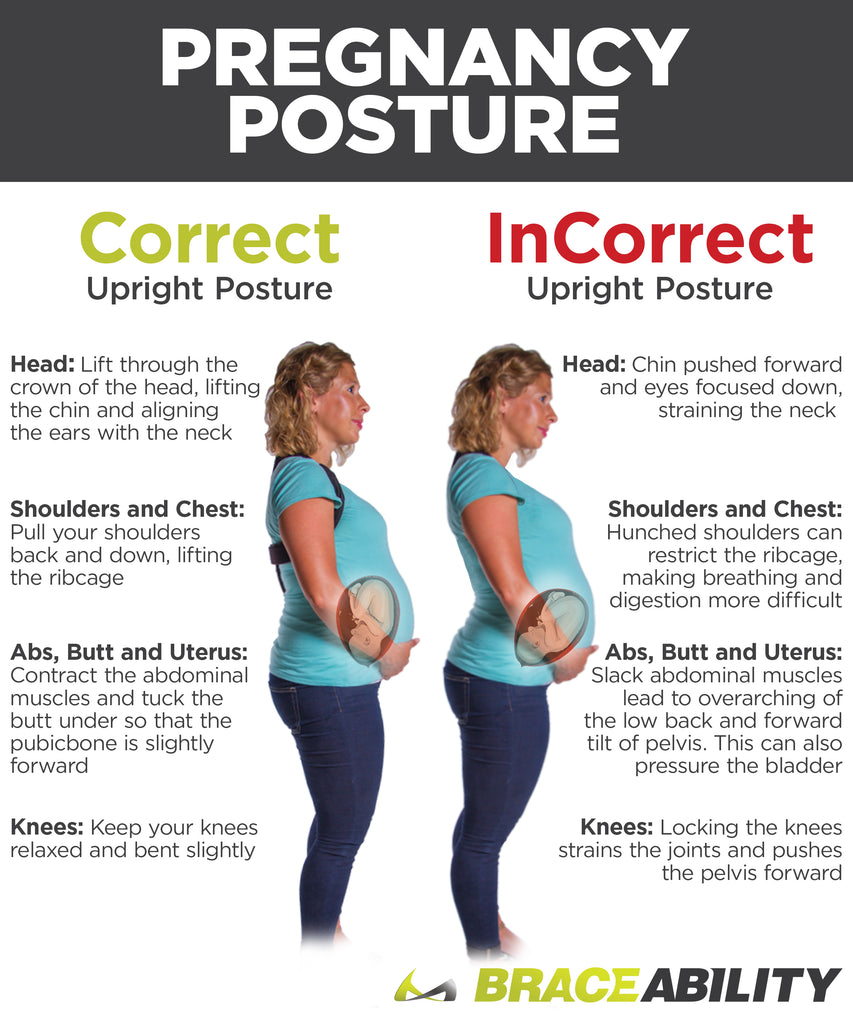
3 Possible Causes of Lower Back Pain (And Some Tips for Relief)
The structures of the lower spine are meant to be relatively stable. But when you’re pregnant, hormones are released that loosen up the ligaments and tendons that support the lower back.
The resulting over-mobility paired with some of the added stressors like weight gain and posture shifts detailed above can cause problems with the sacroiliac joint or tailbone—possibly early on in your pregnancy.
Pelvic Girdle Pain
Pelvic girdle pain, or PGP, is an umbrella term used to describe pain in the joints, ligaments, and muscles that make up the pelvic girdle (the lower part of your torso located between the abdomen and legs). Two of the more common types of PGP include:
- Sacroiliac (SI) joint dysfunction
- Symphysis pubis dysfunction (SPD)
Generally speaking, these problems relate to a less stable, uneven pelvis during pregnancy as a result of hormone changes as well as swelling and increased stress on the pelvic area related to pregnancy.
This could occur as soon as the first trimester of pregnancy or in the final month of pregnancy as the baby’s head moves down in the pelvis. Some even experience PGP after giving birth.
SI Joint May Cause Back Pain on the Left or Right Side

The excess stress on the low back along with hormone changes that make the ligaments more flexible can cause problems where the upper part of the hip bones meet up with the sacrum at the base of the spine. Too much mobility in this area can create alignment issues and cause pain.
With SI joint problems, the pain may vary from dull and achy to sharp. It typically hurts in the area where the joint is located—causing pain on either the left or right side of the low back. And this discomfort may radiate to other areas like the hip, groin, butt or even the abdomen.
Wearing a pregnancy support belt might help remedy this pain on the left or right side of the back during pregnancy. Besides helping to bear some of the excess weight of your tummy, pregnancy back support belts for sacroiliac pain are specifically designed to ease pressure on and stabilize the lower back by applying abdominal compression.
You can also do SI joint exercises to strengthen tissues responsible for supporting this area of the body. Learn more about treating pain in the SI joint.
Popping in Your Hip and Back? SPD May be to Blame
Symphysis pubis dysfunction causes pain that is usually centered at the front of the pelvis where this joint is located, though it can also radiate to the low back, hips, groin, lower abdomen or leg.
If you have this, you may hear the lower back and hip joints clicking or popping in and out when walking or changing position. Sufferers often take on a waddling gait.
Treatment for SPD involves limiting activities that might irritate the region, such as straddling or twisting movements, vacuuming (take full advantage of this), standing for a long time, squatting or exercising strenuously.
On the other hand, exercises to strengthen the pelvic floor and core can help get rid of the pain, as can resting the pelvis as much as possible and keeping a pillow between the legs when resting. Icing the hip can also reduce pain and inflammation in this area.
Tailbone Pain
The same forces at play in SI joint dysfunction and SPD can also cause pain in the tailbone area of the low-back/upper buttocks region. This achy to sharp pain occurs near the center of the low back, rather than off to the side, as is the case with sacroiliac joint pain.
Wearing a maternity back support band that compresses the abdomen and supports the back can help with this pain, as can massage, heat therapy and using good posture. Find more tips for dealing with tailbone pain.
Sciatica
The sciatic nerve is the largest one in the body that stretches from the lower back all the way through the legs, providing sensation to the thigh, lower leg and sole of the foot.
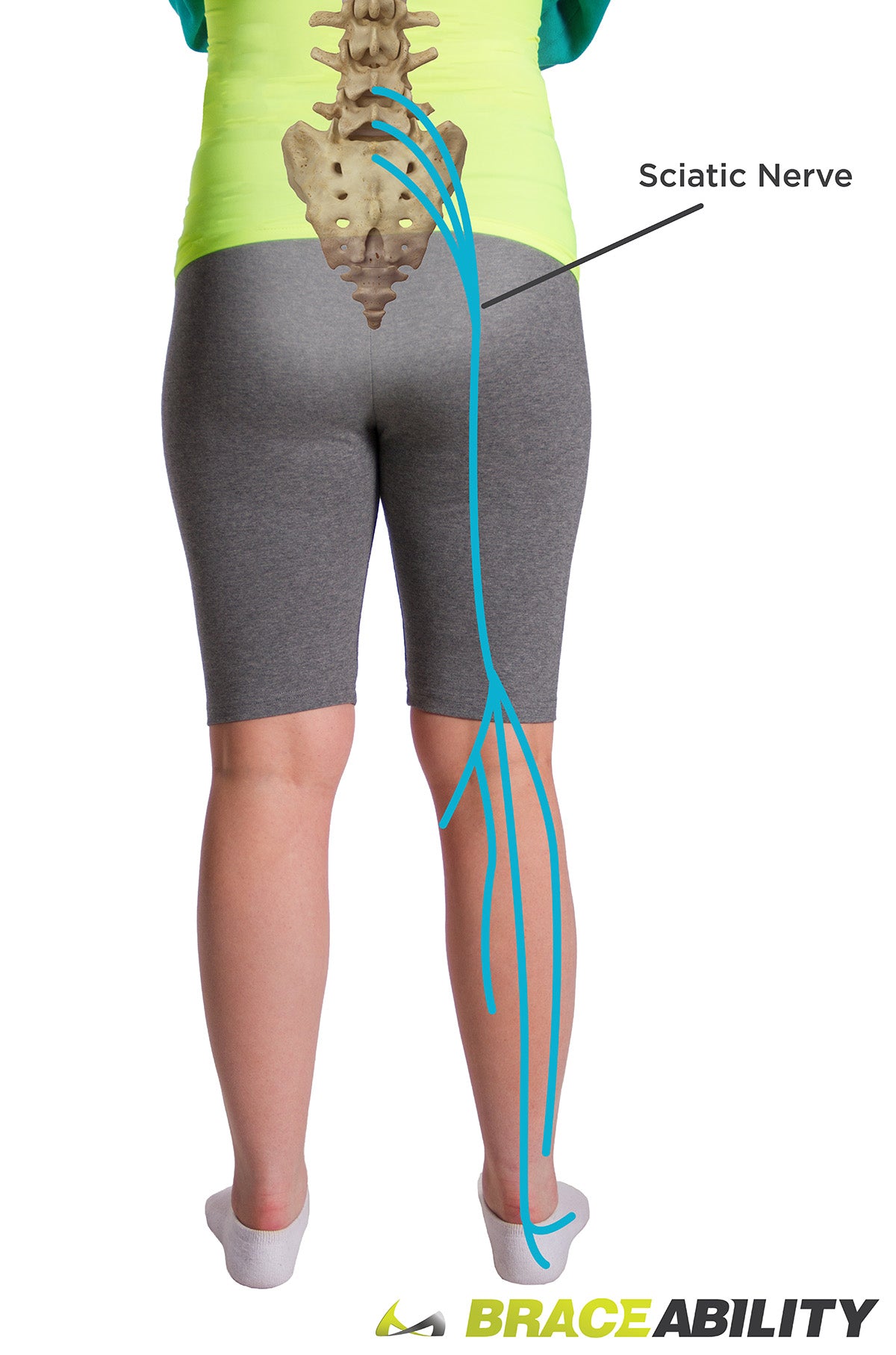
The nerve happens to run under your uterus, and for some, a growing baby can press on it. Fluid retention and an increased curve of the low back can also lead to changes that pinch the nerve. Or during the third trimester of pregnancy, your baby’s head press directly onto the nerve when it shifts down in the pelvis.
This sciatic nerve pressure can cause terrible, stabbing pain or numbness and tingling that starts in the back or buttocks and radiates down the backs of the legs.
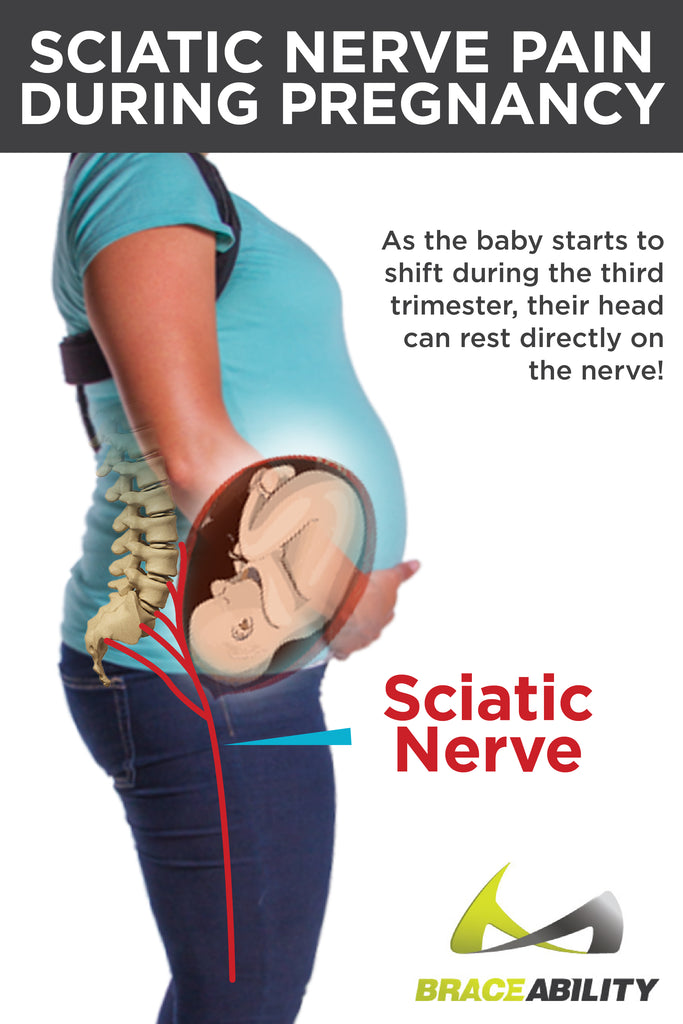
This typically affects either the right or left side, though some women feel it in both legs. The pain may be constant or intermittent.
Thankfully, this more intense source of back pain during pregnancy is far less common than the “normal” dull or throbbing discomforts of pregnancy.
For relief, you can put a warm compress on the region and a doctor may recommend you can take a low dosage of acetaminophen to take the edge off the pain. Prenatal massage, physical therapy, swimming (the buoyancy of water eases pressure on the spine) and sleeping with a pillow between the legs can reduce pressure on the sciatic nerve.
3 Common Culprits for Mid- or Upper Back Pain
The mid- to upper back may also be sore anytime from early pregnancy to late pregnancy. But again, such pain is most common during the second and third trimester.
Shifts in Posture and Body
One possible cause of pain high on the back is the general forward shifting of your center of gravity that occurs when you’re pregnant. This pulling of everything forward can strain the middle or upper area of the back as well as the neck.
Besides the obvious expansion of your stomach, your breast tissue will also increase—usually around 2 pounds! This, too, can stress the neck, shoulders and thoracic spine.
Exercises to strengthen the back can help it to support the expanding load. And stretches and massage can help relieve tension in the region.
Wearing an upper back brace that supports the shoulders can also protect against bad posture that can compound the problem and ease some of the strain on the upper back and neck.
Wearing a supportive bra and comfortable clothing are other easy ways to treat pain in the upper back.
Rib Cage Issues
Your rib cage and diaphragm also shift during pregnancy to accommodate your little bundle of joy. For some, this leads to unfortunate side effects such as a trapped nerve, torn ligaments, dislocated ribs or in rare cases, rib fractures. Plus your baby may kick or punch the rib cage area or wedge his or her little head into the area, adding insult to injury.
The resulting mid- or upper back pain can range from mild to extreme, and the discomfort may be centered on either the left or right side of the body. When the baby’s head it to blame, pain is usually located just below the breasts.
Maintaining a healthy standing posture and making sure to sit up straight can really help you deal with rib pain during pregnancy.
A chair with good lumbar support can make a big difference—you might consider using a lumbar support pillow for car rides or at work if your chair is not great or a shoulder support brace to keep you from hunching your shoulders. Also, be sure to change position often.
Ice and heat therapy (we offer gel packs for this) can help with pain, as can exercises to support and stretch the body. Swimming is a great activity for easing back pain while you’re pregnant.
You should avoid lifting heavy things, and when that is not possible, be sure to use proper form for lifting. This includes when holding another child.
Massage, physical therapy, and a chiropractic adjustment can also help ease the pain in the strained tissues of the upper back and improve the alignment of your body.
If your rib is dislocated or fractured or you have torn a ligament in that vicinity, you might consider wearing a rib belt.
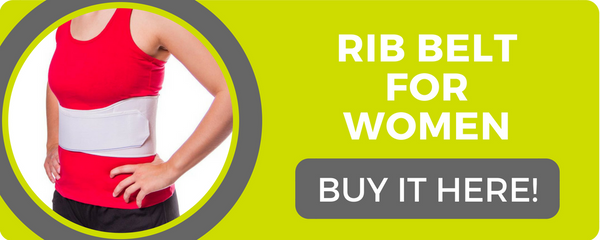
Gas Pocket
Your body produces more of a hormone known as progesterone during pregnancy that slows down digestion and can lead to more gas and bloating than normal. And then to make matters worse, your growing uterus will eventually cut into the stomach’s space, further slowing down digestion and creating gas.
This can create cramp-like pain in the abdomen, with the rib area being a common site for the formation of a gas bubble.
To minimize and relieve this source of discomfort, be sure to drink lots of water and eat fiber-rich foods (though overdoing the latter can actually make the problem worse).
You may also need to limit your intake of gas-causing foods. On the other hand, some foods can help reduce gas. Everyone’s body is different, but a few examples of foods that can make gas worse and better include:
|
Gassy Foods |
Gas-reducing Foods |
|
Beans and lentils |
Ginger |
|
Broccoli, cabbage Brussel sprouts, cauliflower |
Peppermint or dandelion tea |
|
Apples |
Pineapple |
|
Soda and other carbonated drinks |
Berries |
|
Hard candy |
Garlic |
|
Onions |
Flaxseed |
|
Processed foods |
Cinnamon |
|
Whole grains |
Avocados |
|
Dairy (for some) |
Wheat Bran |
You should also avoid using straws or chewing gum, as doing so can make you suck in a lot of air. Eating several small meals throughout the day rather than three large ones can also help. A consistent exercise routine can also “keep things moving.”
It’s Better to Be Safe Than Sorry
While it is no secret that pregnancy comes with its fair share of unpleasant symptoms, you should not simply brush off upper or lower back pain as par for the course when you’re expecting. In many cases, there are things you can do to make yourself more comfortable so you can enjoy this special time in your life.
In addition, back pain can be a warning sign that something’s not right, especially if it is accompanied by other symptoms, such as bleeding, cramps or nausea. Or it might be associated with labor.
Getting checked out by a doctor can give you peace of mind and help limit the risk of complications or miscarriage.








